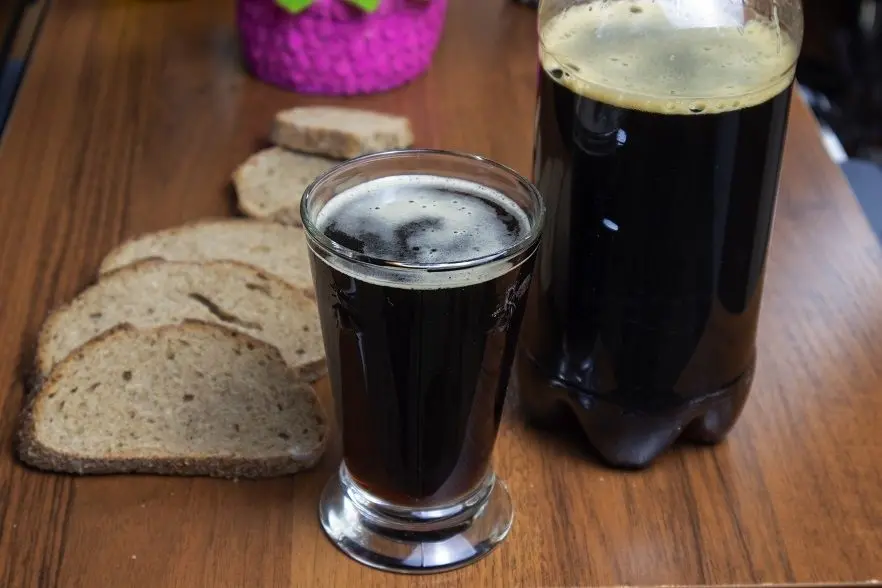Contents
By color, taste and aroma, properly made homemade kvass from malt cannot be distinguished from natural store-bought drinks prepared in accordance with GOST. We will look at traditional technology that has been proven for decades.
Theory
Kvass made from fermented rye malt is considered classic, but in the proposed recipe, you can use any other malt in the same proportions, for example, barley or wheat, although the taste will change. Next, let’s look at the difference between fermented and unfermented malt.
In the preparation of spirits, we use unfermented malt, which we split into sugar, and then through fermentation we process it into alcohol. But for kvass, it is better to take a more aromatic fermented malt used in bread baking (after sprouting and drying, the grains undergo additional heat treatment at 50-70 ° C in an airless chamber).
Fermented malt does not participate in fermentation, since high temperature destroys the enzymes in the grains that are responsible for the breakdown of starch into simple sugars, but it makes kvass more aromatic and tastier. To saturate the drink with carbon dioxide, added beet sugar will ferment for several hours.
The minimum amount of sugar (according to the recipe) to obtain carbon dioxide is 100 grams, then be guided by taste. The drink can be further sweetened before bottling. In extreme cases, instead of dry yeast, pressed ones are suitable, but they can give kvass an unpleasant yeasty taste, so it’s better to take dry ones.
After the first preparation, a residue will remain, which is called “thickness” and is a natural sourdough that replaces yeast. To get kvass from malt without yeast, during the next preparation, add a handful of kvass from the first batch.
Ingredients:
- ground rye fermented malt – 50-80 grams (a little more than half a glass);
- water – 2 liters;
- sugar – 100-150 grams;
- dry yeast (baking) – 5 grams (only for the first batch).
Recipe for kvass from malt
1. Bring water to a boil, remove from stove, cool to 50°C.
2. Slowly add the malt to the hot water, stirring constantly to avoid lumps. You should get a homogeneous mixture, resembling choux pastry. Leave to infuse for 2-3 hours.
3. During the first preparation (if there is no starter), after the kvass wort has cooled to 26-28°C, pour 100 ml of liquid into a glass separately and dilute the yeast in it according to the instructions on the package. If the temperature is above 30°C, the yeast may die.
4. Add diluted yeast or a handful of sourdough (“thick”) to the wort, add sugar.
5. Stir until the sugar is completely dissolved. Cover loosely with a lid, leave for 8 hours to ferment in a dark place (cover) at room temperature (18-26°C).
6. Filter malt kvass through 2-3 layers of gauze.
The sediment can be collected in a separate container and stored in the refrigerator for no more than a day. This is a natural starter that replaces dry yeast in the following servings of the drink.
7. Try a drink. Add sugar to taste if desired.
8. Pour kvass into storage containers – plastic or glass bottles, jars. Leave 3-5 cm of free space in each container. Close hermetically.
9. Before use, put the bottles in a refrigerator or cellar at a temperature of 2-10°C for at least 3-4 hours to cool and carbonate (carbonate).
The shelf life of kvass from malt is up to 5 days. The drink is obtained non-alcoholic or with a minimum alcohol content (up to 0,5%).










